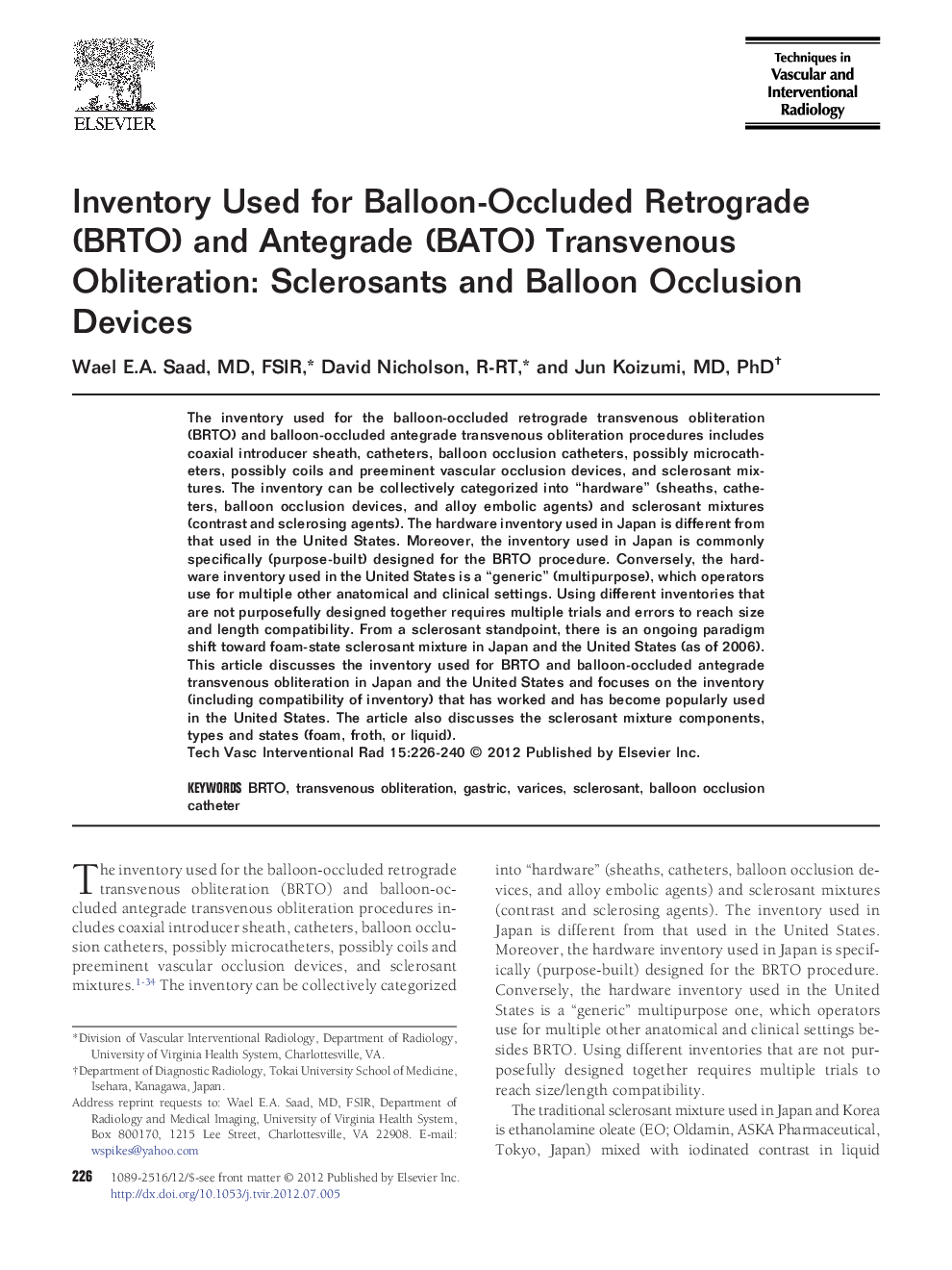| Article ID | Journal | Published Year | Pages | File Type |
|---|---|---|---|---|
| 4251658 | Techniques in Vascular and Interventional Radiology | 2012 | 15 Pages |
The inventory used for the balloon-occluded retrograde transvenous obliteration (BRTO) and balloon-occluded antegrade transvenous obliteration procedures includes coaxial introducer sheath, catheters, balloon occlusion catheters, possibly microcatheters, possibly coils and preeminent vascular occlusion devices, and sclerosant mixtures. The inventory can be collectively categorized into “hardware” (sheaths, catheters, balloon occlusion devices, and alloy embolic agents) and sclerosant mixtures (contrast and sclerosing agents). The hardware inventory used in Japan is different from that used in the United States. Moreover, the inventory used in Japan is commonly specifically (purpose-built) designed for the BRTO procedure. Conversely, the hardware inventory used in the United States is a “generic” (multipurpose), which operators use for multiple other anatomical and clinical settings. Using different inventories that are not purposefully designed together requires multiple trials and errors to reach size and length compatibility. From a sclerosant standpoint, there is an ongoing paradigm shift toward foam-state sclerosant mixture in Japan and the United States (as of 2006). This article discusses the inventory used for BRTO and balloon-occluded antegrade transvenous obliteration in Japan and the United States and focuses on the inventory (including compatibility of inventory) that has worked and has become popularly used in the United States. The article also discusses the sclerosant mixture components, types and states (foam, froth, or liquid).
